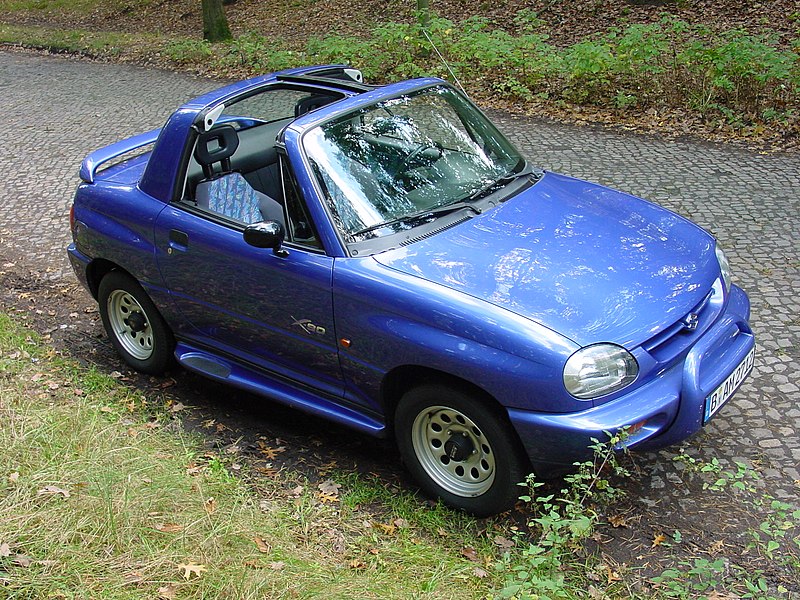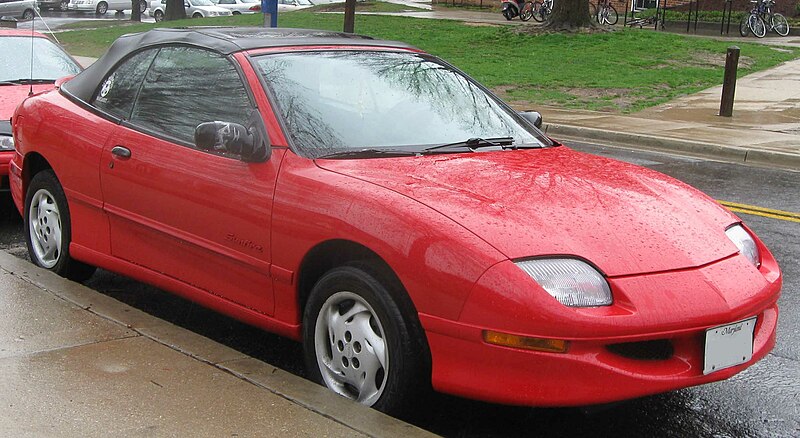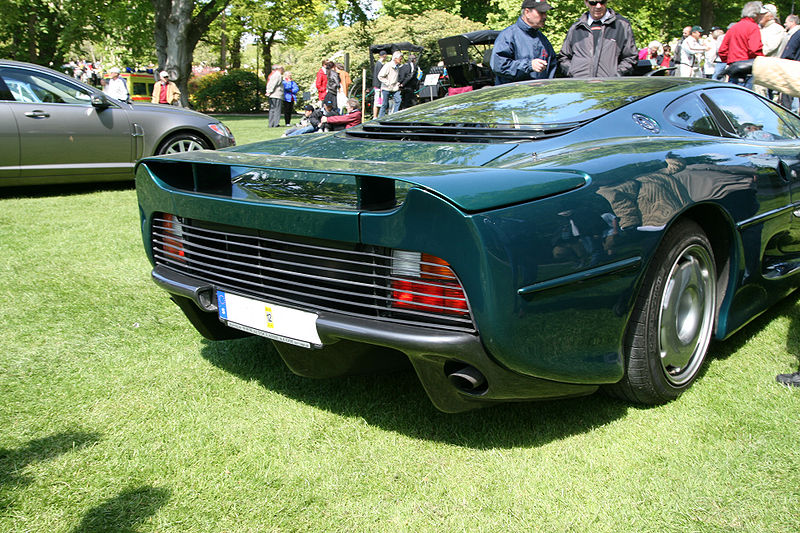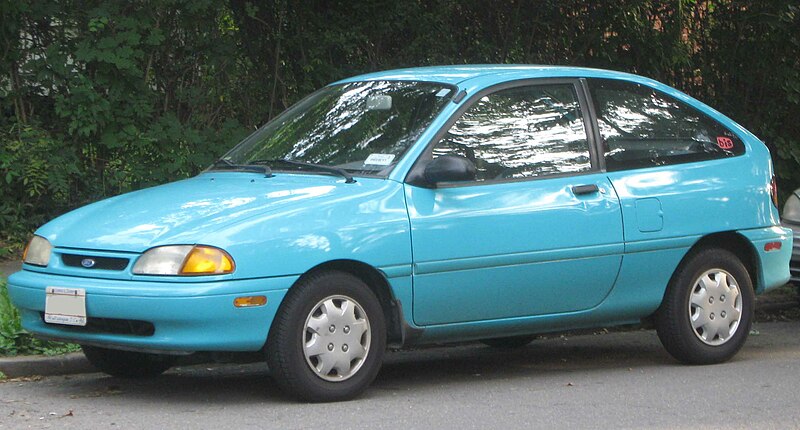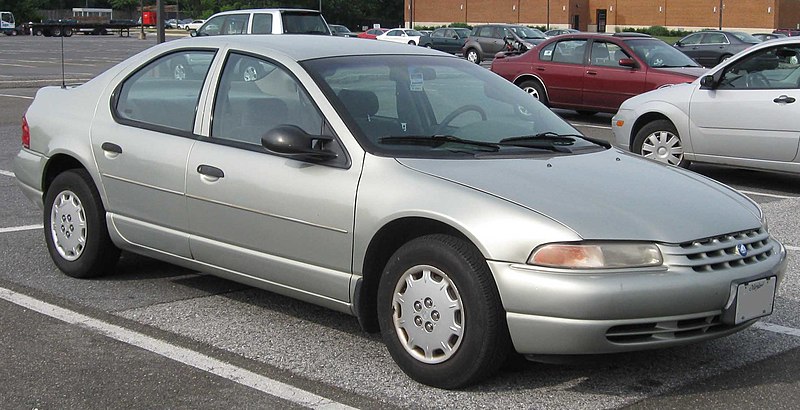The 1990s: a time when the car world was buzzing with excitement and potential. After shaking off the slower years, this era brought us quicker, sharper-handling cars and a surge in vehicles that were a joy to drive. But, as with any story, there’s another side. While some cars were flying high, others didn’t quite take off. Let’s dive into the mix of the 1990s automotive scene, from the not-so-great to the downright disappointing.
Suzuki X-90 (1995)
The Suzuki X-90, a tiny SUV introduced in the mid-’90s, was hard to categorize. With its two seats, T-top roof, and four-wheel drive, it was a mix of a sports car and an off-roader, but it didn’t excel in either category.
It’s been over a quarter-century since the Suzuki X-90 first left us all baffled, and we’re still no closer to understanding what Suzuki was thinking with this peculiar creation. Based on the more familiar Suzuki Sidekick, the X-90 was underwhelming in power, and its optional four-wheel drive was a bit of a misnomer. The vehicle’s low ground clearance and regular passenger-car tires meant it couldn’t handle much beyond a smooth lawn. Adding to its list of quirks, the X-90 lacked practicality; it had no back seat and a tiny trunk that just about fit the removable T-tops. Yes, in a throwback to the 70s, this 90s car sported a T-top roof, failing to even make the cut as a decent convertible.
The exterior design seemed like it could have been the work of a preschooler’s imagination, and the interior wasn’t any better. The dash was made of cheap plastic, jarringly contrasted with upholstery that looked like a mishmash of bright crayon colors.
Suzuki managed to sell only about 7,000 units of the X-90 over three years, a production run that, in hindsight, was three years too long. In a decade that produced some notable automotive flops, the Suzuki X-90 is possibly the worst car of the 1990s.
Ford Explorer (1990, 1998)
The Ford Explorer, introduced in 1990, was initially celebrated for bringing the SUV concept to the masses. However, it soon became infamous for its role in the Firestone tire controversy, where tire failures led to numerous accidents. This issue was exacerbated by the Explorer’s design, which was prone to rolling over. Despite its popularity, the Explorer’s safety concerns overshadow the positive aspects of its early years.
Also, the 1998 Ford Explorer certainly had its fair share of issues. Under the hood, the standard 4.0-liter V6 engine was less than impressive, struggling with power and guzzling gas at an alarming rate. Owners often complained about the engine stalling, making unsettling rattling noises, and sometimes not restarting, especially on very hot days.
But the engine wasn’t the only problem. The interior of the 1998 Explorer didn’t fare much better in terms of quality. There were instances where the brake pedal would detach, the radio would act up, and the doors would stubbornly refuse to lock or unlock. Given these numerous and varied problems, it’s not too shocking to learn that this model was recalled 14 times.
Yugo Cabrio (1990)
Ah, the 1990 Yugo Cabrio. Just when you thought the Yugo couldn’t get any worse, along came the 1990 convertible version, making an already challenging car even more so. Rather than opting for a simple manual roof, which you might expect on the cheapest convertible in America at $8,990, Yugo decided to install a complex electro-hydraulic mechanism. Given the Yugo’s notorious reputation for reliability issues, adding one more complicated element seemed like a recipe for disaster.
Interestingly, while the hardtop Yugo models got an upgrade to fuel injection in 1990, the Cabrio was stuck with the outdated, difficult-to-adjust feedback carburetor. The reason? Well, it remains a mystery, but it certainly didn’t endear the Cabrio to American consumers, who had already been burned by the Yugo brand. The result? Less than 100 of these convertible catastrophes were sold before Yugo’s operation ceased in 1992.
Pontiac Sunfire (1997)
The 1997 Pontiac Sunfire, unfortunately, didn’t quite live up to expectations in terms of performance. Even with the option of a twin-cam engine, it struggled to deliver the kind of lively drive that drivers hoped for. The main culprit was its 2.4-liter four-cylinder engine, which was plagued with issues. Owners frequently reported problems like rattling noises, misfiring, and rough idling, indicating a less-than-smooth experience under the hood.
But engine troubles weren’t the only concern with the ’97 Sunfire. There were numerous complaints regarding its steering, enough to catch the attention of the National Highway Traffic Safety Administration (NHTSA). These steering issues were serious enough to lead to a recall of at least 1.1 million Sunfires, a significant number that underscored the severity of the problem. The 1997 Pontiac Sunfire was subject to nine recalls, affecting over 3 million vehicles. This series of recalls highlighted not just specific faults but pointed to broader issues in quality and reliability for this model.
Daewoo Lanos (1998)
In 1998, South Korean automaker Daewoo made a bold entrance into the U.S. market, likely inspired by the successes of its compatriots Hyundai and Kia. The Lanos was an eclectic mix of parts from Opel and Holden (General Motors Australia), but their most notable feature was their affordability. However, this low cost was clearly reflected in the quality of their interiors, which were dominated by cheap plastics, reminiscent of the uninviting atmosphere of a bus station restroom. The Lanos failed to make a significant impact in a market already crowded with superior options.
Daewoo’s marketing strategy was as unconventional as its cars. Instead of relying on traditional dealerships, the company targeted the college crowd, employing students to sell these vehicles to their peers. This approach seemed fitting, considering the target market consisted of buyers who were typically short on funds and credit, mirroring Daewoo’s own financial standing at the time.
Ironically, many of these cars ended up being sold to the student sales reps themselves. This led to a legal quandary when these reps sued Daewoo after discovering that their significant employee discounts were reported to the IRS as taxable income. Daewoo’s foray into the American market was short-lived; the company’s conglomerate soon collapsed into bankruptcy.
Jaguar XJ220 (1992)
The Jaguar XJ220, launched in 1992, was one of the most eagerly awaited supercars of the early ’90s, yet it ended up as a major letdown for many. The hype began in 1988 when Jaguar introduced a concept car that was nothing short of breathtaking. It boasted a powerful 6.2-liter 48-valve V-12 engine, all-wheel drive, and an impressive 0-60 mph acceleration time of just 3.5 seconds. This was at a time when the 385-hp Ferrari Testarossa, with its 5.3-second 0-60 time, was considered top-tier. The concept car generated immense excitement, leading Jaguar to announce a production version with a hefty price tag. Enthusiasts were quick to put down deposits.
However, when the production version of the XJ220 arrived in 1992, it was a different beast. The much-anticipated V-12 had been replaced with a V-6, and the all-wheel drive system was switched to rear-wheel drive. Moreover, the price had soared to an eye-watering £470,000, equivalent to about $1.4 million today.
Despite these changes, the XJ220 still managed to deliver on performance, with 542 horsepower and a 0-60 time of 3.6 seconds. While it was undoubtedly a formidable supercar, it wasn’t the dream machine Jaguar had initially promised.
Disappointed depositors even took legal action to cancel their contracts. Jaguar struggled to find enough buyers for the planned 350-unit production run, eventually ceasing production after completing only 282 units. The last of these supercars reportedly sold for just a third of its original list price, marking a sad end to what could have been a legendary vehicle. Although it was one of the fastest cars of its time, its high price and failure to meet initial expectations make it a notable disappointment of the ’90s.
Plymouth Prowler (1997)
The Plymouth Prowler was a retro-styled roadster introduced in the late ’90s. While it certainly stood out for its unique design, evoking the hot rods of the 1950s, it was underpowered with a V6 engine in a segment where V8s were the norm. The Prowler was more of a style statement than a performance vehicle, and it didn’t resonate well with either the performance enthusiasts or the general public.
One of the major letdowns was the absence of a manual transmission, which left many enthusiasts disappointed. The car’s 3.5-liter V6 engine produced only 214 horsepower, which, while not insignificant, didn’t live up to the expectations set by its flashy appearance. This performance gap was reflected in its sales, with only about 457 units sold in its debut year.
Adding to the Prowler’s troubles was a significant mechanical issue involving the lower ball joint, which had a tendency to pop out of its socket unexpectedly. This defect could bring the vehicle to an abrupt and potentially dangerous stop. Addressing this safety concern, Plymouth issued a recall for the Prowler.
Despite its unique styling and the initial excitement it generated, the Prowler’s journey was short-lived. By 2002, under Chrysler’s management, the Prowler was discontinued, marking the end of its brief and somewhat tumultuous run in the automotive world.
Ford Aspire (1994)
The Ford Aspire, launched in 1994, was a follow-up to the successful Mazda-designed, Kia-built Ford Festiva. However, this new iteration, crafted by Ford and Kia without Mazda’s input, missed the mark. The Aspire was a larger and more awkwardly shaped version of its predecessor, yet it relied on the same mechanical components, which didn’t translate well to its new form.
Driving the Aspire felt like a lesson in what not to do in car design. Its unassisted steering was both slow and laborious, making maneuvering a chore. The car’s grip on the road was unimpressive, and its body roll could be described as almost laughably excessive. To add to these woes, the Aspire lacked any semblance of refinement, especially at city driving speeds – the most it could comfortably handle with its carryover 1.3-liter engine, which was now tasked with powering a larger and heavier vehicle.
The interior of the Aspire was equally underwhelming, offering little improvement over its main competitor, the Geo Metro. In fact, in a surprising turn of events, the Geo Metro, known for its own shortcomings, actually offered better fuel economy and, unbelievably, a better driving experience than the Aspire.
Cadillac Catera (1997)
The Cadillac Catera was introduced in the late ’90s as a smaller, more European-style offering from the luxury brand. However, it was plagued by reliability issues and failed to deliver the level of luxury and performance associated with the Cadillac name. The Catera struggled to compete with more established luxury sedans from Europe and Japan.
The Cadillac Catera, a rear-wheel-drive luxury sedan introduced in 1996, had a brief and largely forgettable run in the automotive market, exiting just five years later. It’s a car often advised to be avoided, and for good reasons. The Catera’s design was unremarkably generic, failing to stand out in a segment where style and presence are key. Its interior quality was underwhelming, lacking the refinement and luxury typically associated with the Cadillac brand. Additionally, the chassis response was tepid, detracting from the driving experience expected of a luxury sedan.
Owning a Catera often meant dealing with some frustrating mechanical issues. Coolant and oil leaks were not uncommon, causing headaches for many owners. A particularly critical problem was the frequent failure of the timing belt idler and tensioner pulley. This issue could lead to severe engine damage, posing a significant risk and often resulting in costly repairs. Recognizing the seriousness of this problem, Cadillac issued a recall for the 1997-2001 Catera models. This recall underscored the reliability issues that plagued the Catera, contributing to its reputation as a luxury sedan best avoided.
Plymouth Breeze (1996)
The 1996 Plymouth Breeze was Chrysler’s attempt to add a Plymouth variant to its JA-body “cloud cars,” which included the somewhat sporty Dodge Stratus and the slightly upscale Chrysler Cirrus.
However, when it came to creating a Plymouth version, the result was a car that seemed like it was conceptualized in a haze of overindulgence. Dubbed a “value-oriented” model, the Breeze sported unassuming wheel covers, a plain body-color grille, and the smallest engine in the JA lineup.
Despite its unpretentious appearance, the Breeze did have its merits. It was spacious, reasonably good to drive, and very affordable. But affordability came at a cost – the car was remarkably spartan. Essentials such as power windows and remote locking were considered luxury add-ons in the world of the Breeze.
The sole engine option, a 132-hp 2.0-liter four-cylinder, was more of a liability than an asset. There were numerous reports of oil leaks in models with less than 20,000 miles on them. Additionally, the Breeze had significant braking issues. Some owners of the 1997 Breeze reported that the brake pedal would sink to the floor during use, a problem that persisted even after replacing brake cylinders and rotors. These issues underscored the Breeze’s position as a functional, economy car, where practicality trumped pleasure, and reliability was a concern.
Conclusion
The 1990s was a decade of both hits and misses in the automotive world. While some models introduced innovative features and designs, others became cautionary tales about what can go wrong in car manufacturing. The worst cars of the ’90s remind us that automotive excellence is a balance of design, performance, safety, and reliability – a balance that is not always easy to achieve. As we look back, these models serve as exciting footnotes in the rich history of the automotive industry, illustrating the challenges and pitfalls of car design and production.

